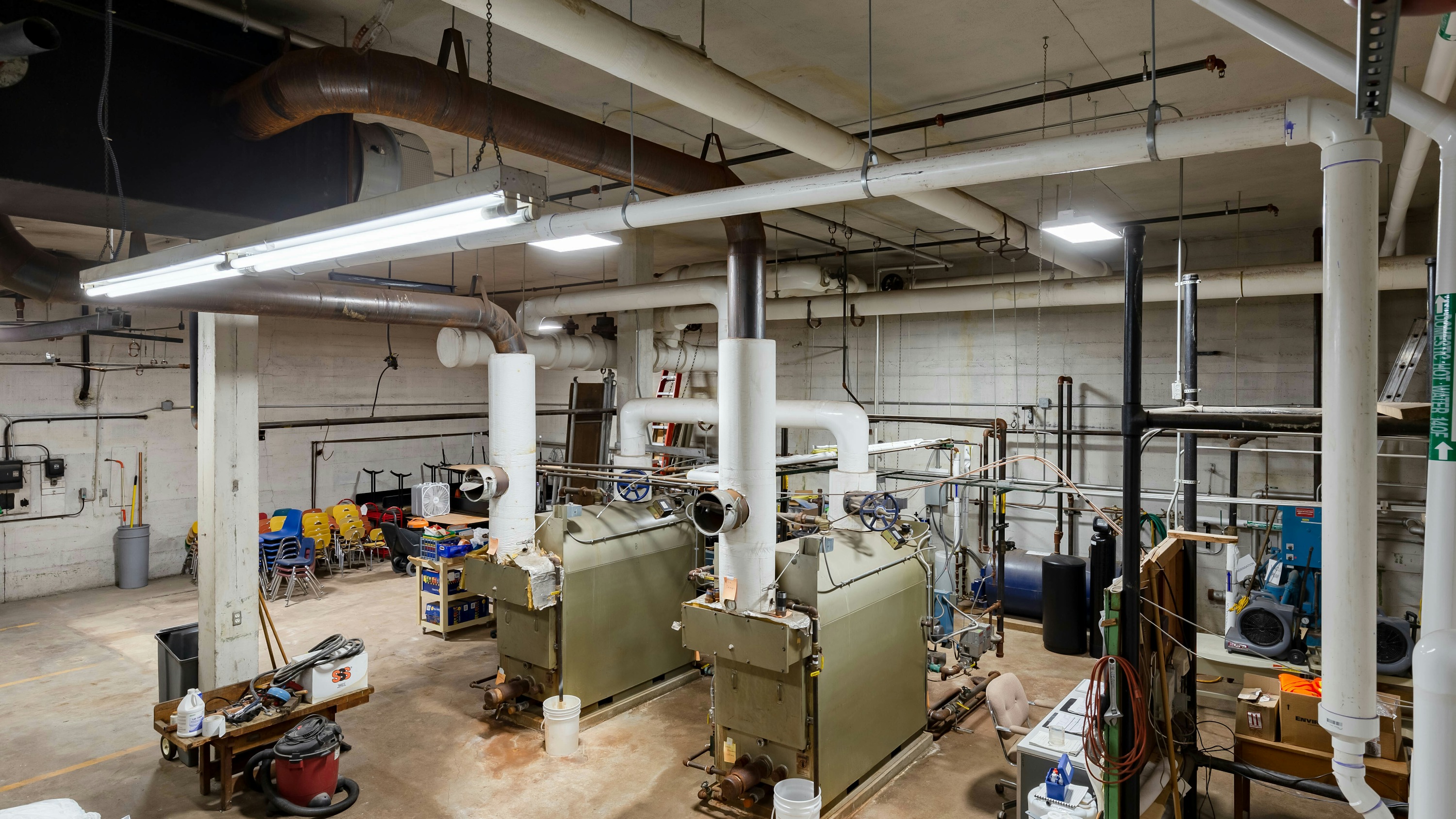
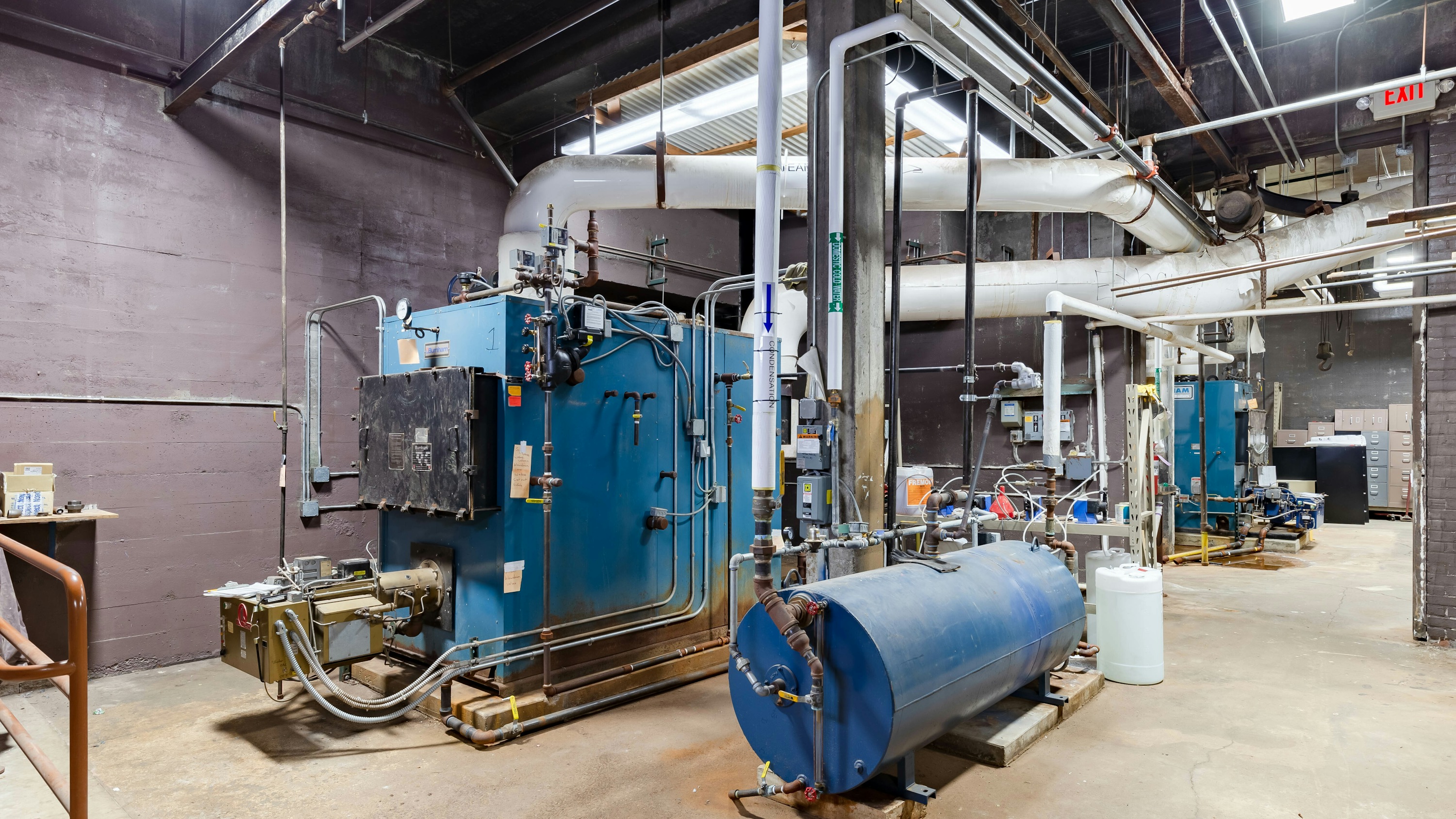
In the modern world of architecture and engineering, sustainability reigns supreme as one of the most important facets of our work, especially with historical or adaptive reuse buildings. With the industry shifting to better account for climate change and architects and engineers across the world making efforts to incorporate sustainable practices into their projects, school districts rely on guidance from firms like Wold to help steer conversations and designs toward a more sustainable future.
As dedicated members of the AIA 2030 Commitment, we have pledged to focus our efforts on reaching net zero emissions in the built environment by the year 2030. To support that goal, we consistently look for funding opportunities for our clients to offset some of the costs that come with implementing sustainable practices. We’re currently working with clients to take advantage of the American Recovery Act’s tax credits for solar power generation and energy property, including geothermal and energy storage systems. The tax credit is typically between 20% and 30% but can scale higher for domestic content products and projects located in former fossil fuel energy communities. We are helping our clients explore how to best implement these initiatives and maximize their tax credit incentives.
Our team was engaged by Winona Public Schools to find a sustainable solution for two of its older buildings, Jefferson Elementary and Washington-Kosciusko Elementary, which each faced a decades-old problem. Built in the 1930s and listed on the National Historic Register, these schools had inadequate Heating, Ventilation and Air Conditioning (HVAC) systems that lacked air conditioning and effective heating measures to keep students safe and comfortable. In recent years, Winona was faced with the decision between reinvesting in their aging facilities or consolidating and building new. Despite both buildings being over 85 years old, the District was committed to finding a solution that supported students and staff while preserving the historic buildings and incorporating sustainable practices for the future.
As the existing schools were both on the historic register and whose history represented the Winona area, the community understood the reasoning for them to be better built and more sustainable. Thanks to Wold’s in-house engineering team and the collaborative environment between engineers and architects, we were able to assess the buildings and provide a full range of potential options that ensured both students and staff remained in safe and healthy environments.
Both schools were built on tight urban sites and originally constructed with a very different set of expectations, incorporating the innovative technology available at that time. Heated by a central steam boiler plant with a central air handling unit located in the basement, our engineering team learned there was no means for true cooling, humidity and ventilation control. Given the COVID pandemic, ventilation, humidity control, filtration and the air delivery method have risen to the top of essential features of safe and healthy environments, and these schools were lacking.
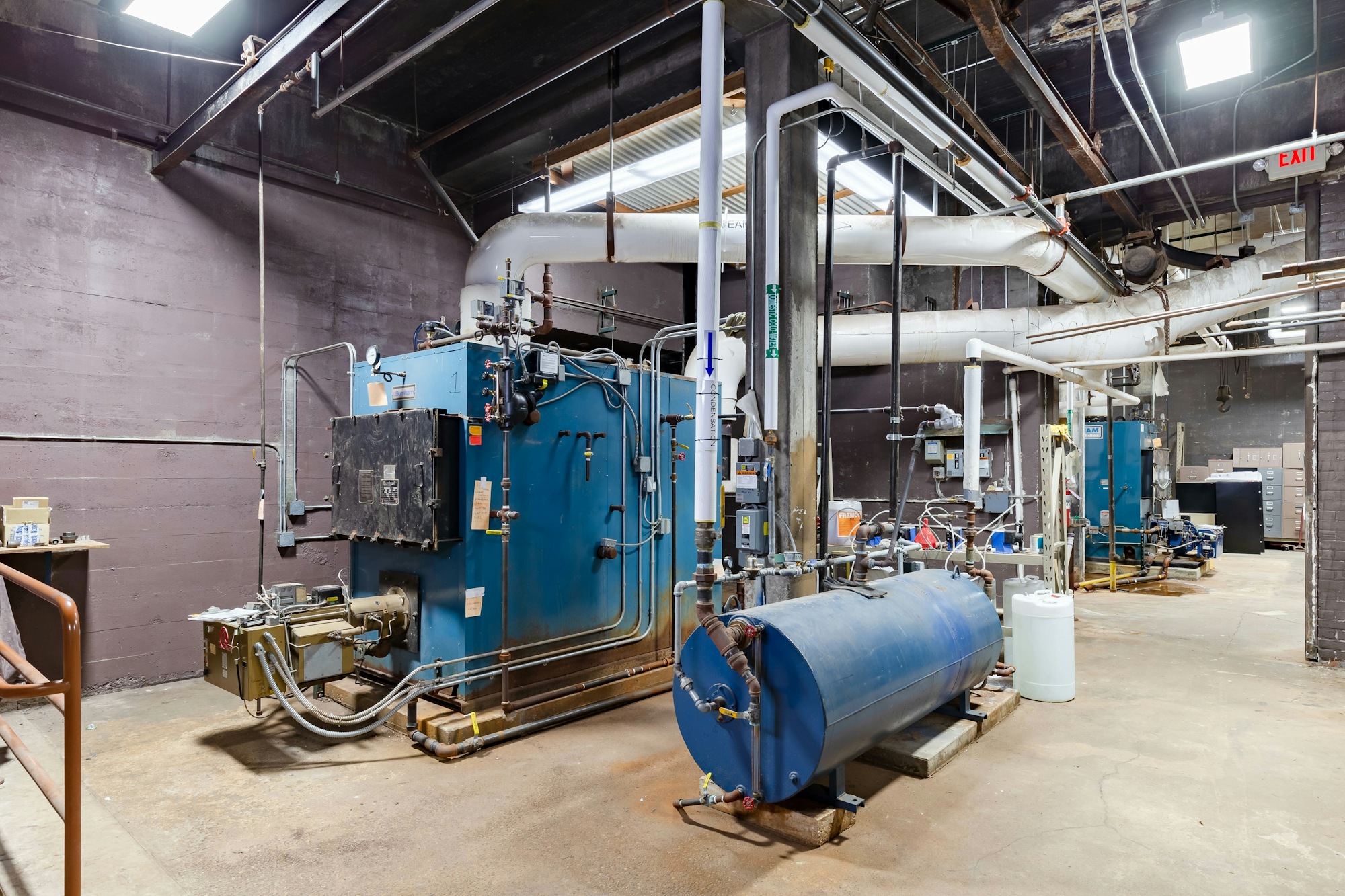
To reduce fossil fuel use and drive down operating costs through improved system energy efficiency, many districts are looking for alternative options like all-electric HVAC systems to heat and cool their buildings. For the elementary school buildings in Winona, specific goals around the building system performance included meeting current ventilation standards, providing heating and cooling temperature control, summer dehumidification capabilities, meeting industry standards for filtration and delivering air in a displacement model to improve the removal of contaminants from the classrooms. The building features that were of most concern were the current aesthetic of the corridors, the generous floor-to-ceiling heights and the large glass exposure in the classrooms.
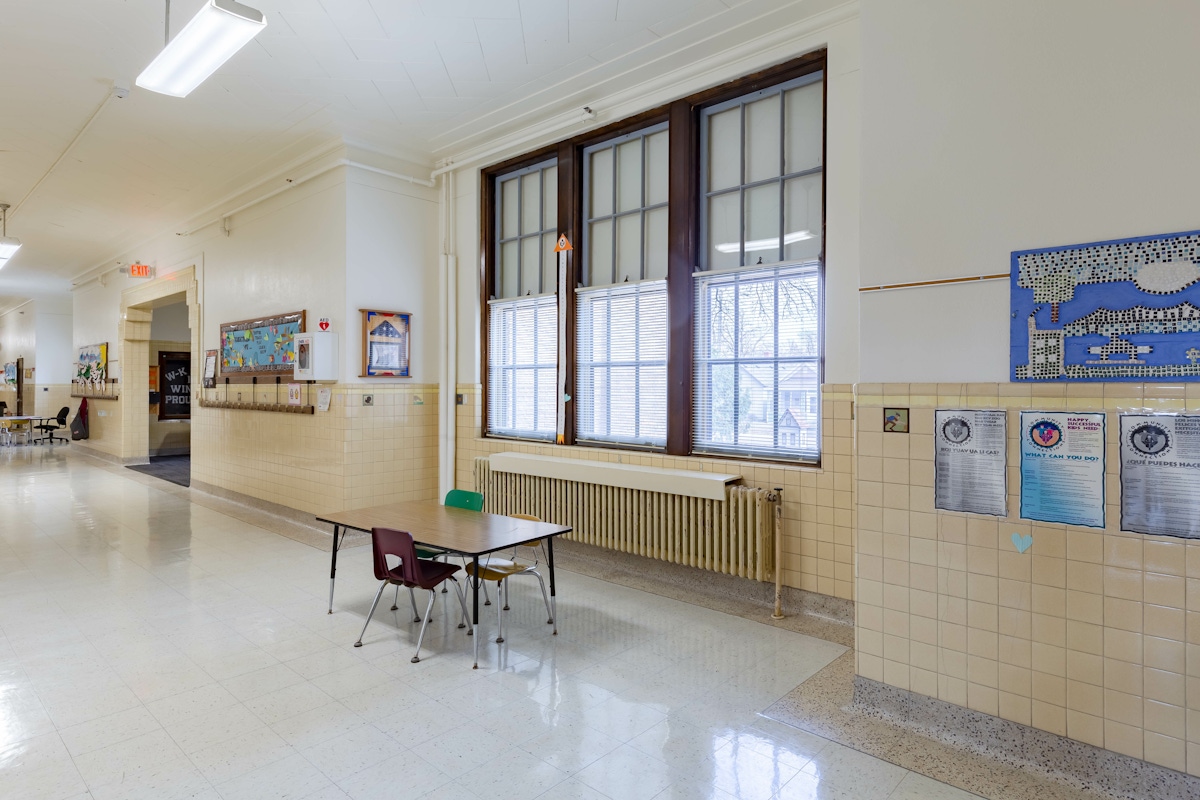
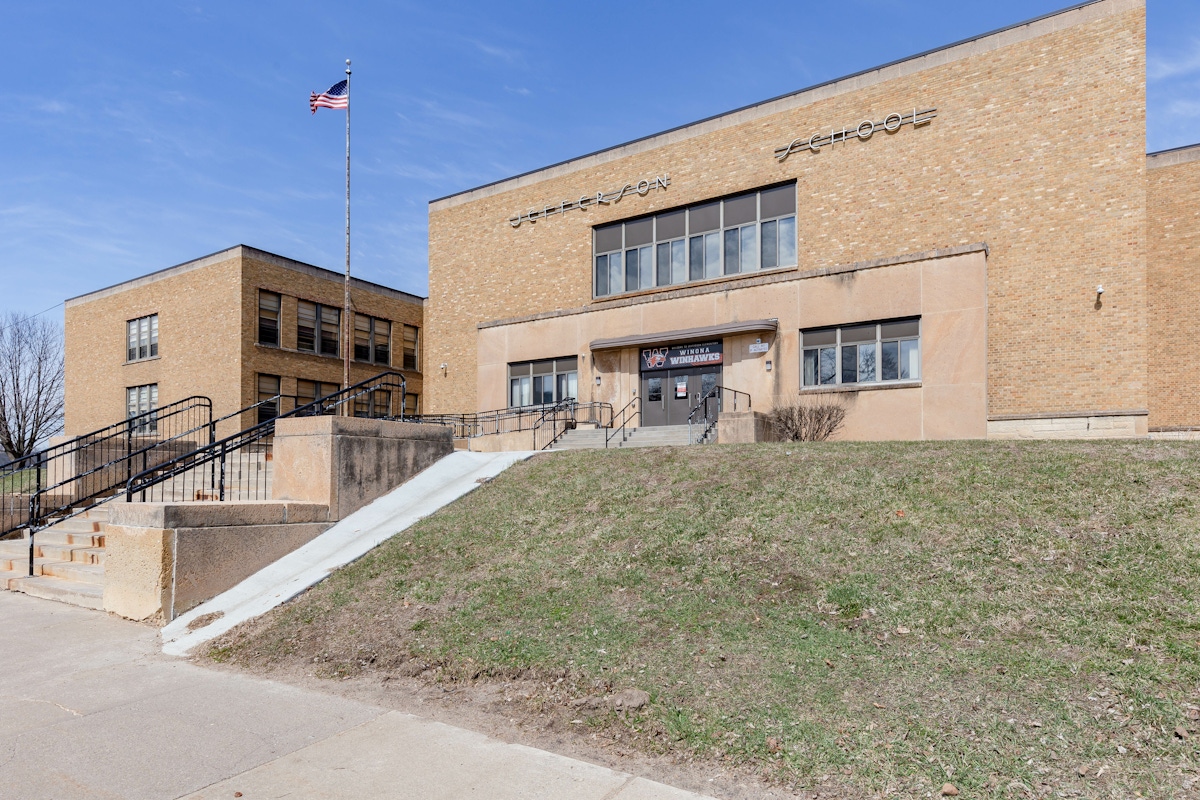
We presented a wide range of solutions to solve the District’s problem, and, through collaboration with the District and other stakeholders, we ultimately decided the best solution was to use a ground-coupled centralized heat pump geothermal system to avoid creating more issues for the District down the road. Without implementing geothermal systems, we would have had to add a chiller to provide dehumidification, generating significant noise for neighboring buildings. Additionally, this would have introduced a host of new challenges associated with implementing a large renovation in a decades-old building. Water-cooled chiller systems could have also posed health concerns, requiring significant maintenance to keep them clean and to avoid incubating diseases in the system.
The geothermal approach enables all mechanical systems to be situated indoors or buried outside to minimize both noise and visual disturbance. However, due to the constraints of the urban school setting, which restricted the available external space for a traditional well field, we worked with Darcy Solutions to implement a deep well closed-loop and high-efficiency heat exchanger geothermal system. The improved performance of the well, thanks to the heat exchanger technology, significantly reduced the number of wells required and allowed for a viable well field solution. The geothermal system also creates an extremely energy-efficient building and aligns with the District’s larger goals of reducing dependence on fossil fuels.
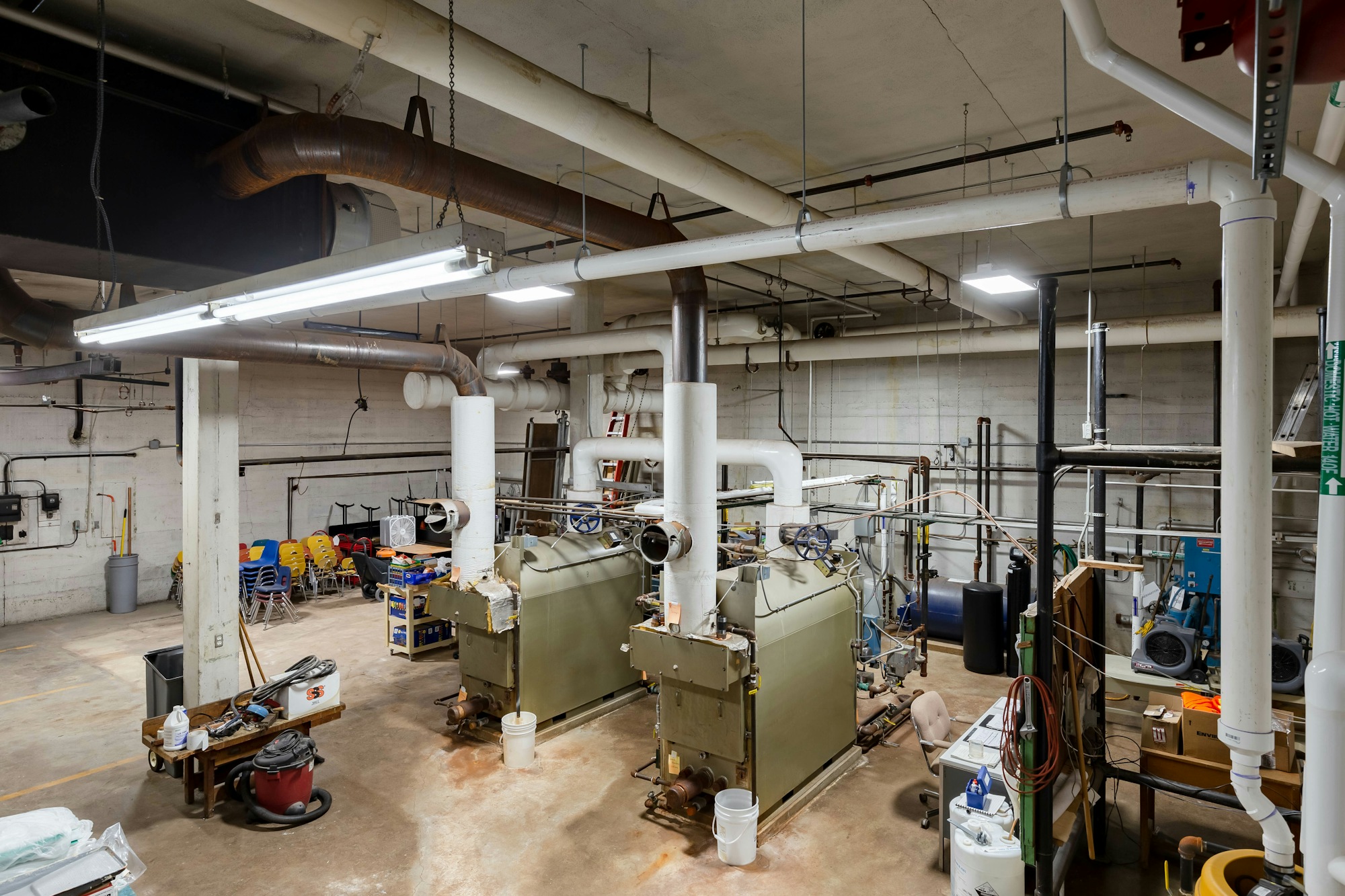
By adapting older buildings to accommodate modern, sustainable technologies, we successfully installed the wells to create a geothermal solution for these buildings while preserving their historic integrity. The new systems set the buildings up for lower energy usage in the future and reduce the District’s carbon output. From a materials standpoint, using the existing onsite buildings and retrofitting them was far more sustainable compared to tearing down and rebuilding these historical fixtures in the city.
We’re extremely proud to be conducting leading edge installations on schools listed on the National Historic Register. A project like this underscores the power of partnering with architects who have in-house engineering services available. Our team brings a wide range of creative solutions and cutting-edge technologies to modernize schools. We collaborate closely with districts and communities to forge a unified, sustainable path forward. In a time when climate change and sustainability hold unprecedented importance in the built environment, we know the responsibility lies with us to continuously innovate. Just as we did with Winona Public Schools, we are committed to ensuring a safe future for the youngest generations in the schools they attend and the communities they call home.